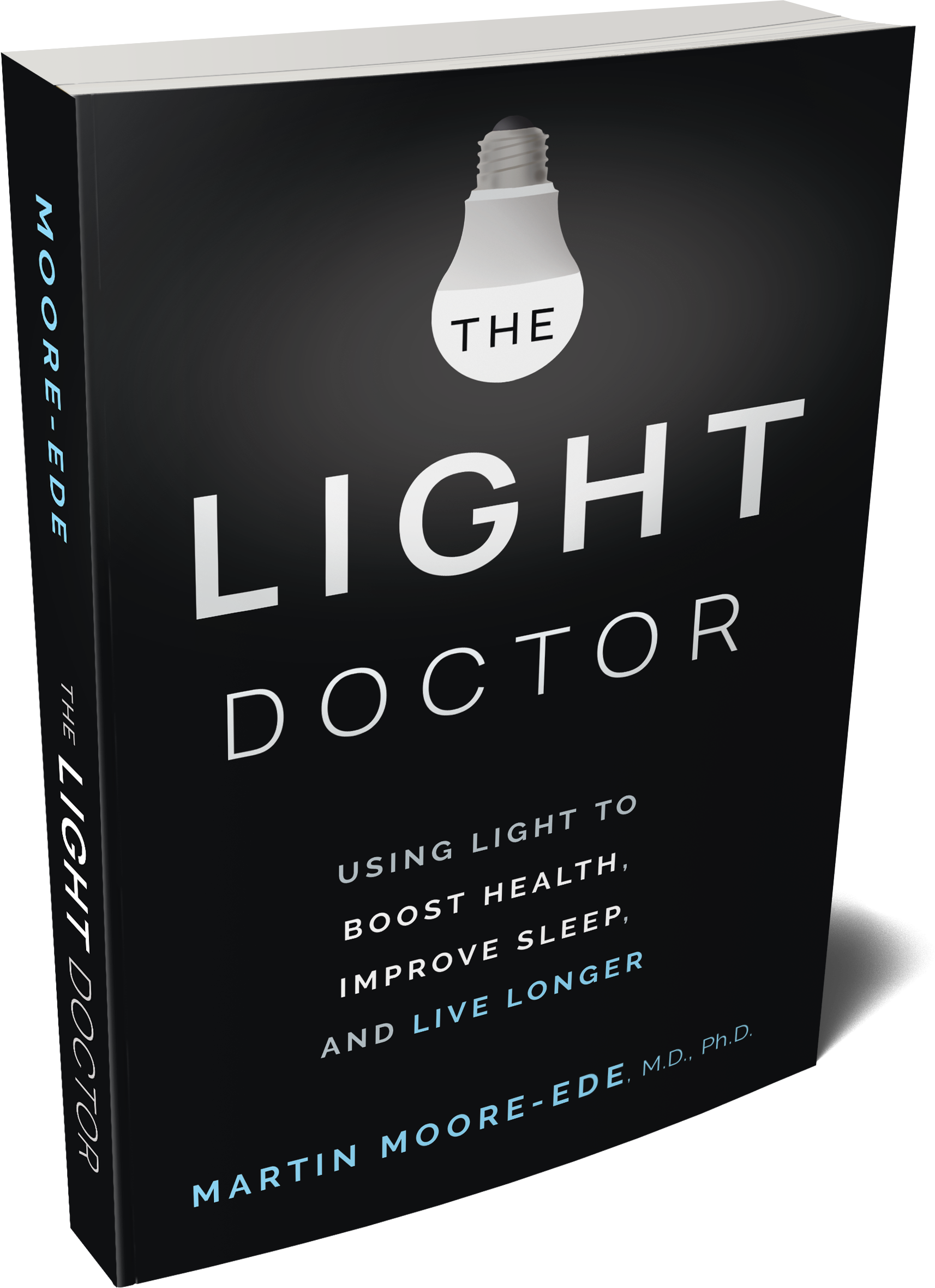It is human nature to focus only on what we can see. But what if what we can’t see is actually key to our health?
In a new section of the publication *The Light Doctor*, renowned expert on circadian health and Harvard Medical School professor Dr. Martin Moore-Ede presents strong arguments in favor of adding red photobiomodulation energy—namely deep red, near-infrared (NIR), and infrared light—to everyday lighting sources.
While natural sunlight emits a broad spectrum from ultraviolet, through blue, cyan, and green, to the long red wavelengths, the so-called deep red spectral range (650–750 nm) and the near-infrared (NIR: 750–900 nm) and infrared (IR > above 900 nm) regions, most current artificial light sources do not emit enough light in the deep red areas, let alone in NIR. As Dr. Moore-Ede reminds us, it is precisely these invisible parts of the light spectrum that can have a fundamental effect on our mitochondria, vision, and overall vitality:
“The depth of penetration into tissue depends on the wavelength of the red or infrared light and its intensity. Red light in the 650–670 nm range is effective in reducing skin dermatitis after radiation, and in restoring the retinal function in the ageing eye.”
This statement is supported by several scientific studies that confirm the positive effects red, NIR, and IR light can bring. For example, a study by Shinhmar et al. (2021), which we also recently mentioned, showed that a single exposure to 670 nm light led to a week-long improvement in color contrast sensitivity.
We spend only about 7% of our time outdoors
Modern humans spend up to 93% of their time indoors—at home, in schools, offices, stores, etc. Indoors, however, we are almost completely cut off from the infrared component of light, as standard windows strongly absorb NIR radiation and conventional LED light sources emit virtually none of it. This is a problem.
NIR and deep red light penetrate deeply into tissues, and thanks to the so-called optical window (also called the Tissue Transparency Window) in the range of approximately 650 to 900 nm, they reach the mitochondria, which are responsible for energy production (ATP) and overall cell regeneration.
It also plays an important role in supporting eye health, retinal regeneration, and protection against oxidative stress, which is often caused by blue light in the harmful blue light (HBL) range, peaking at 450 nm.
Should indoor light sources emit NIR?
Historically, we were also naturally exposed to infrared light in the evenings—by the fire, by candlelight, and from traditional incandescent bulbs, which have a very high proportion of red and infrared light. Today, however, light sources (especially LEDs) emit minimal light in these areas, and in the pursuit of maximum energy efficiency, spectral components that are not visible but essential to the body are gradually disappearing from lighting technologies.
This trend is further reinforced by regulations such as those from the U.S. DOE (Department of Energy)
or European energy labeling, which emphasize energy efficiency (lm/W) rather than the biological benefits of a given light source. However, this hampers the development and application of technologies aimed at healthier lighting, because products with lower energy efficiency would not pass as acceptable light sources under current regulations.
Red and NIR light: the future of healthy lighting
That’s why it is even more important to look for solutions that aim to mimic natural daylight—not only in the visible spectrum, but also in the invisible one. The patented Spectrasol LED technology therefore emphasizes not only sufficient representation of the red spectral component up to 670 nm, but primarily ensures that indoor lighting supports overall human health in the most comprehensive way possible.
We are therefore pleased that experts like Dr. Martin Moore-Ede, known as The Light Doctor, are bringing these topics into broader awareness. And we’re even more pleased that lighting design is slowly returning to nature—to what the human body knows, needs, and benefits from. We see this text as further strong confirmation that photobiomodulation energy has an indispensable place in modern lighting.
Source: Invisible Healing: Near-Infrared Light and Health, The Light Doctor
Translated using AI


